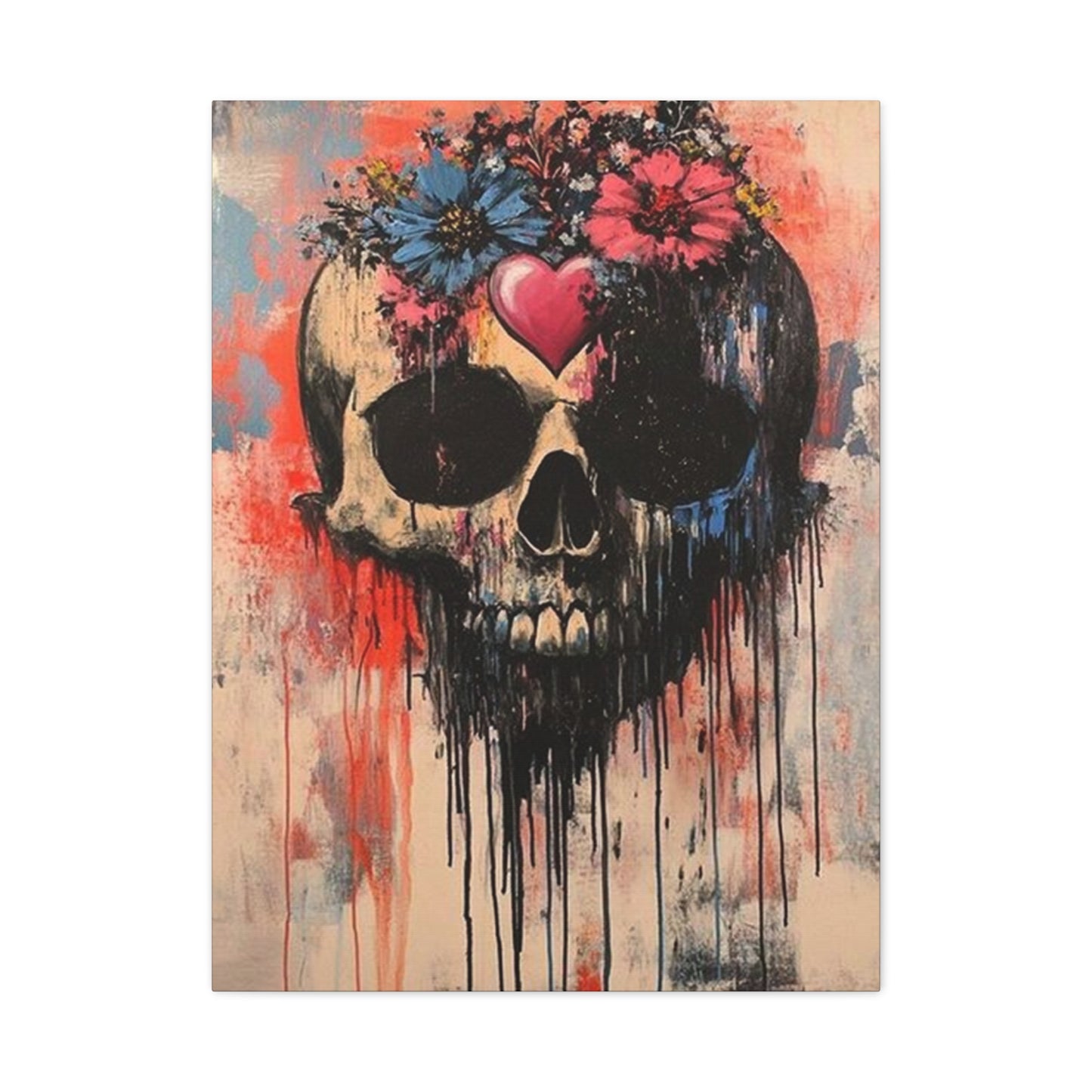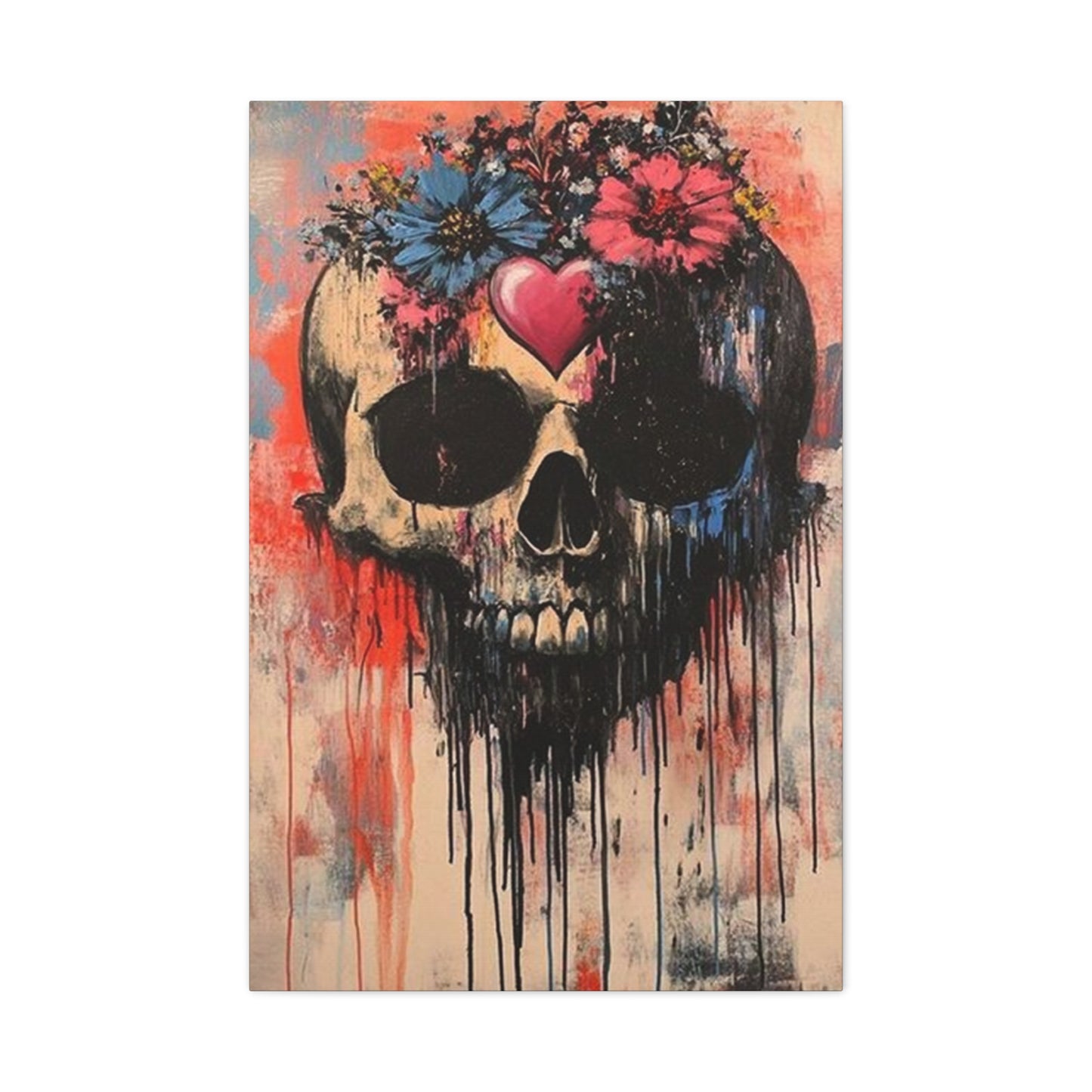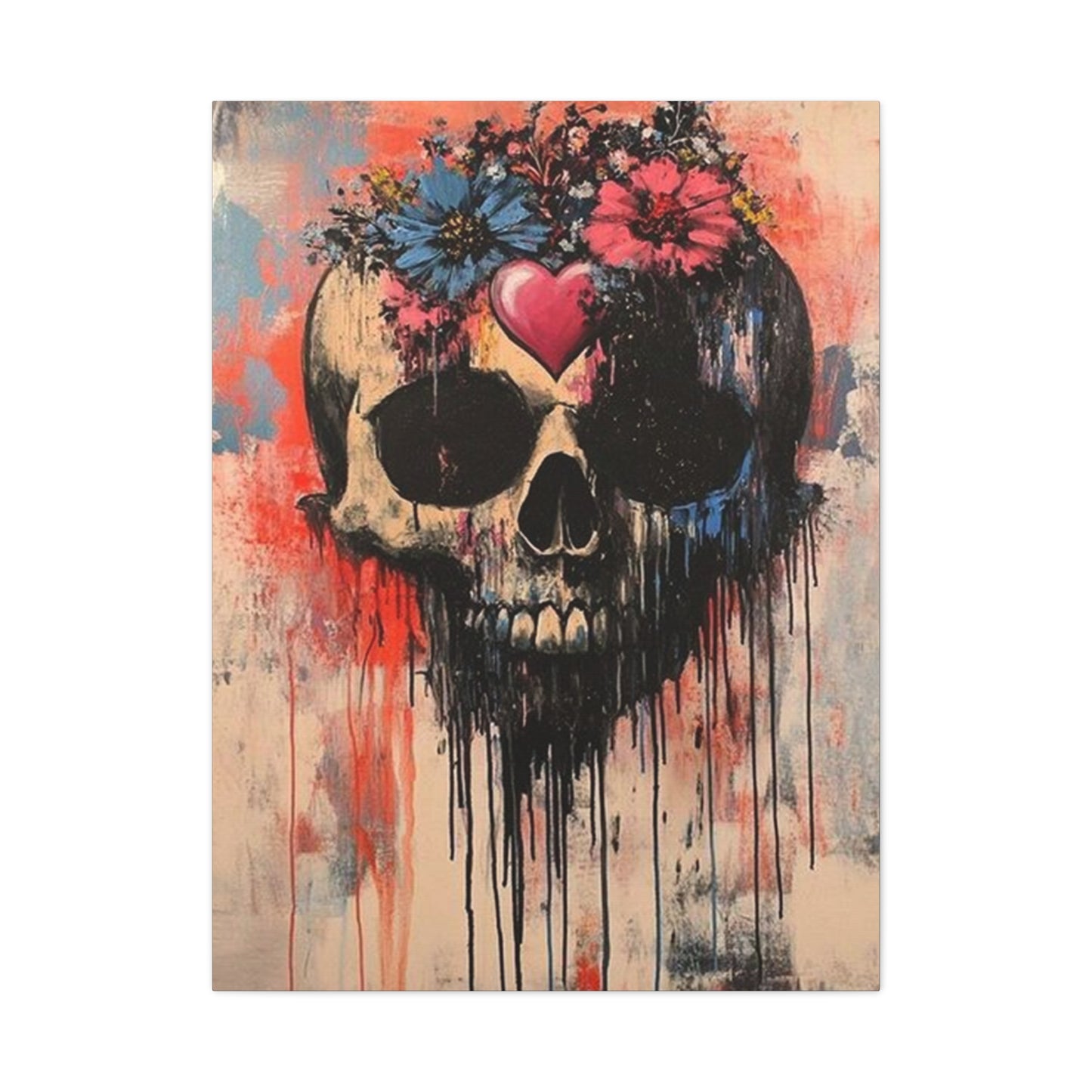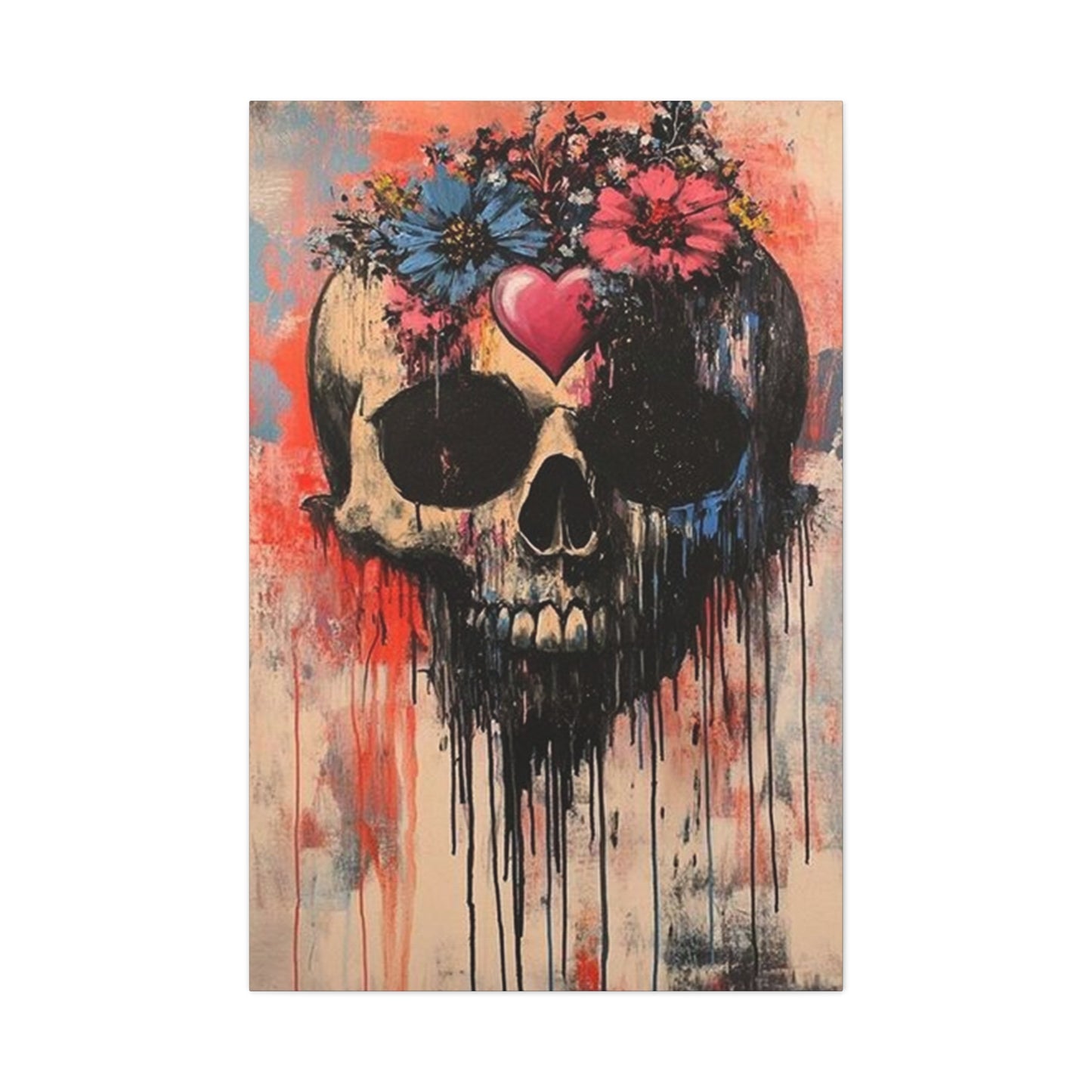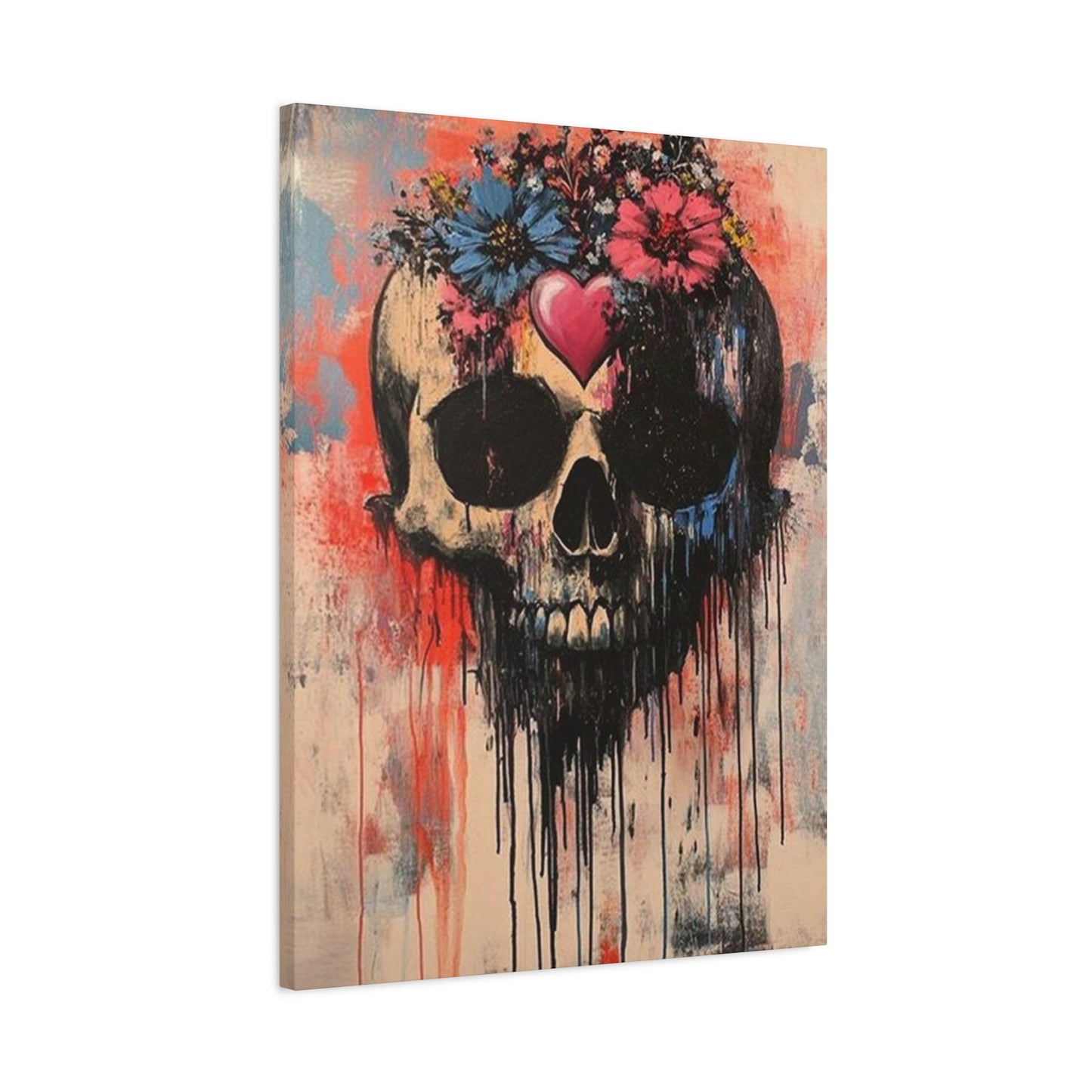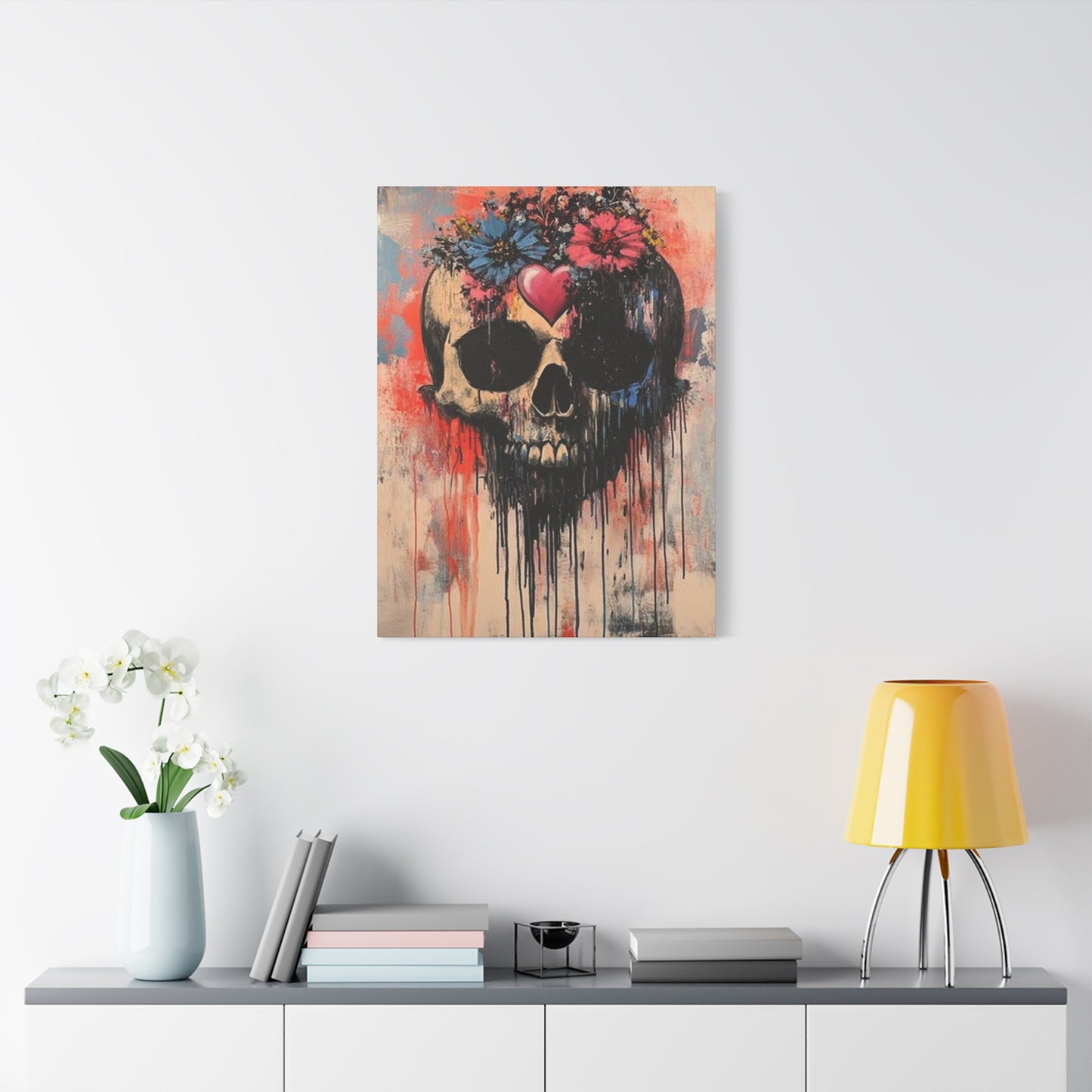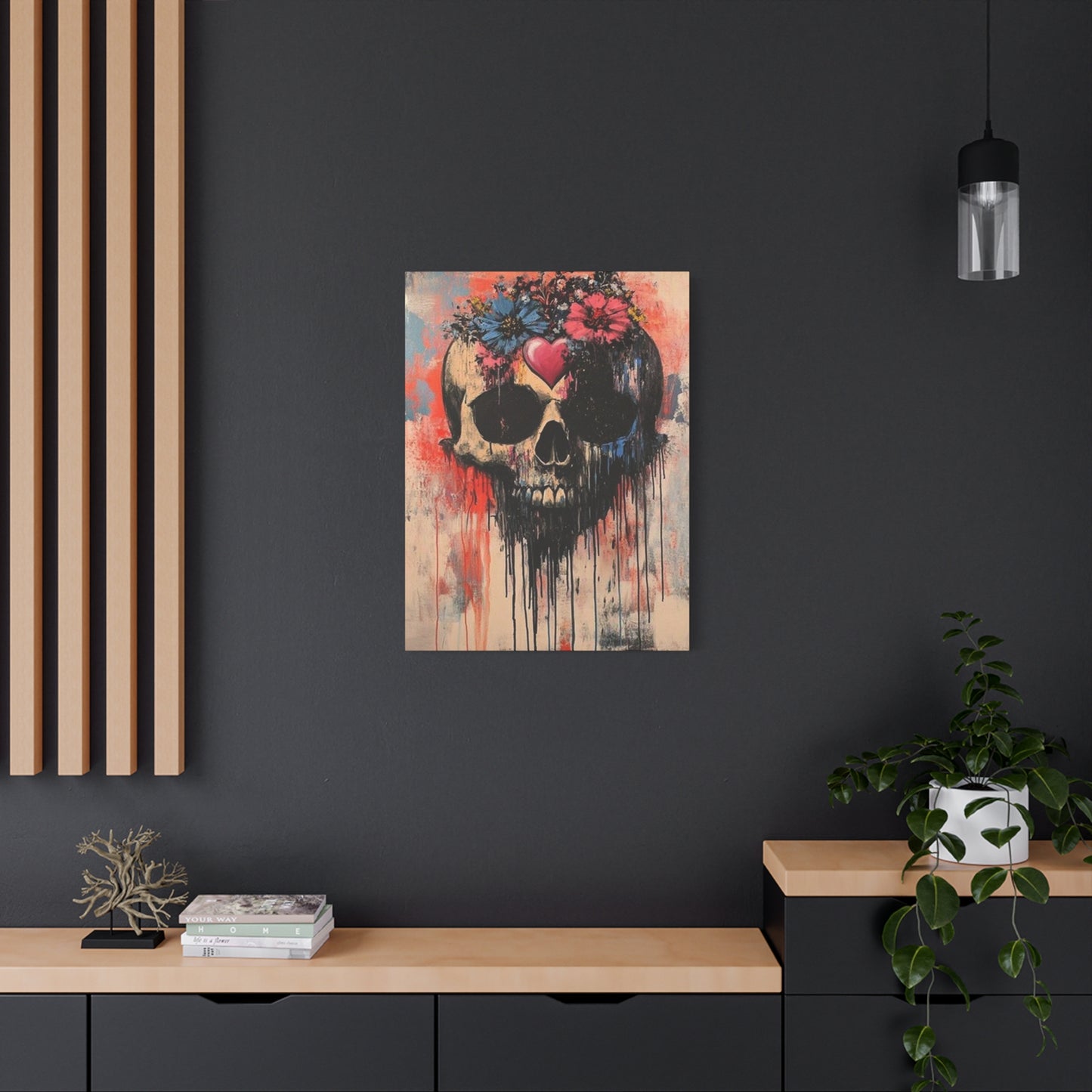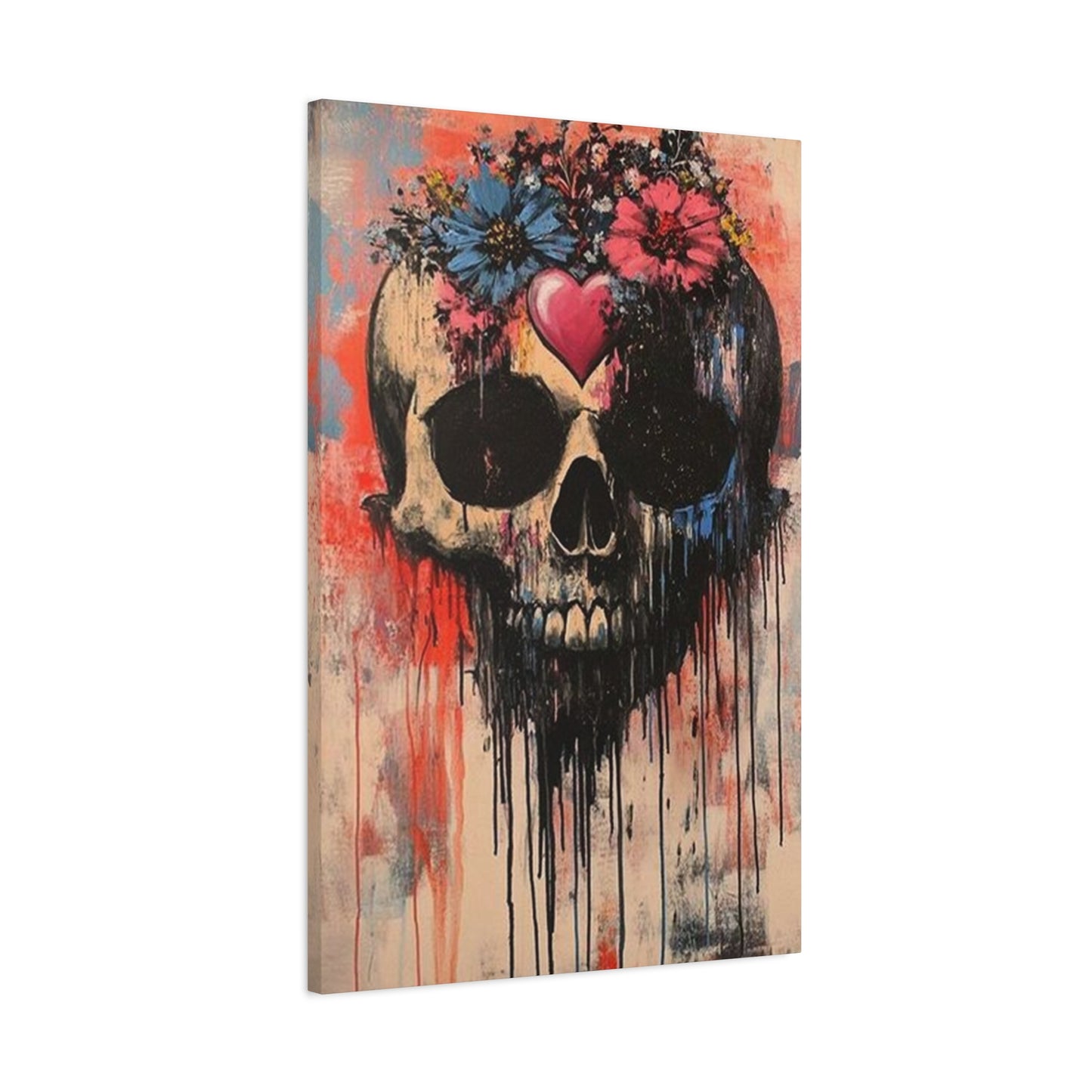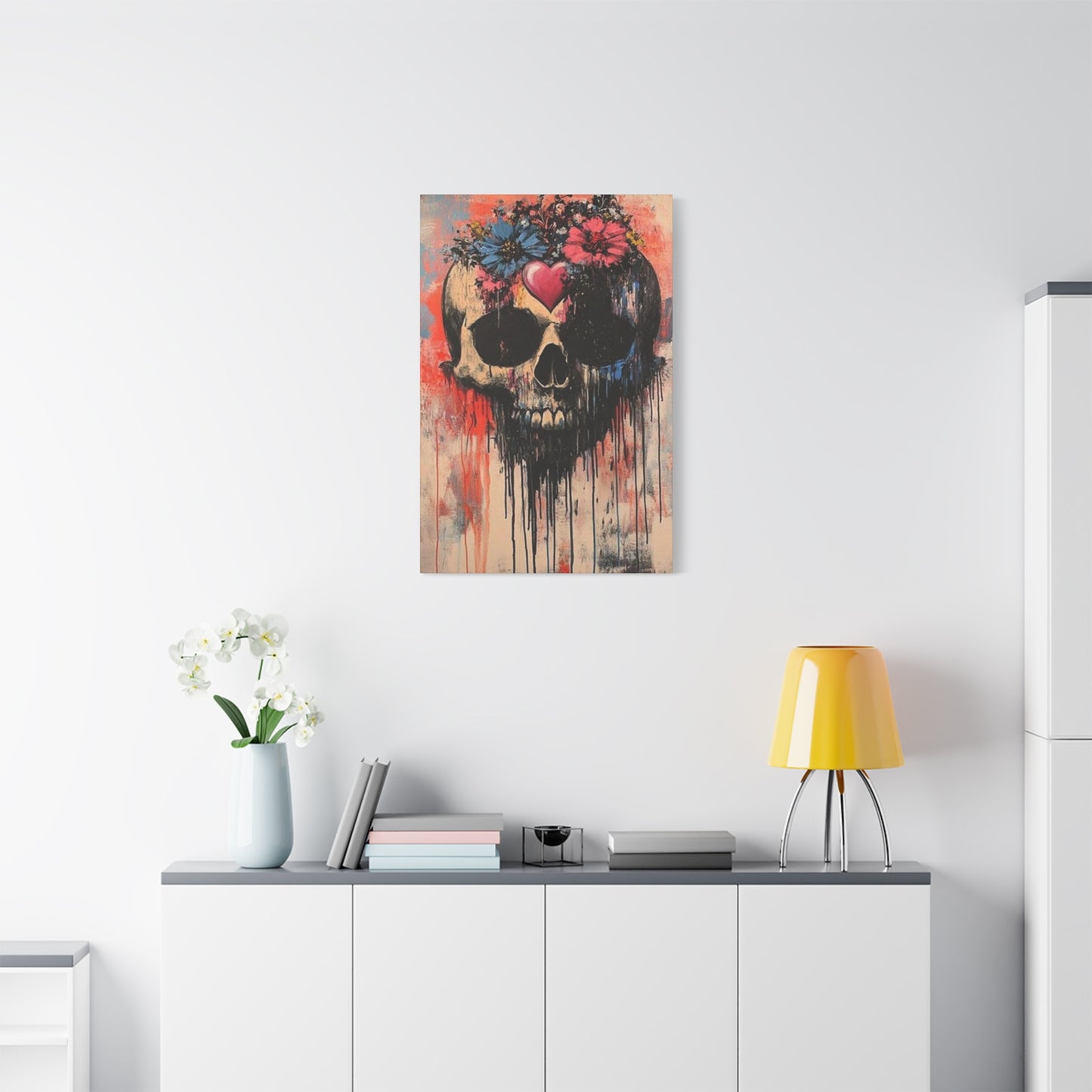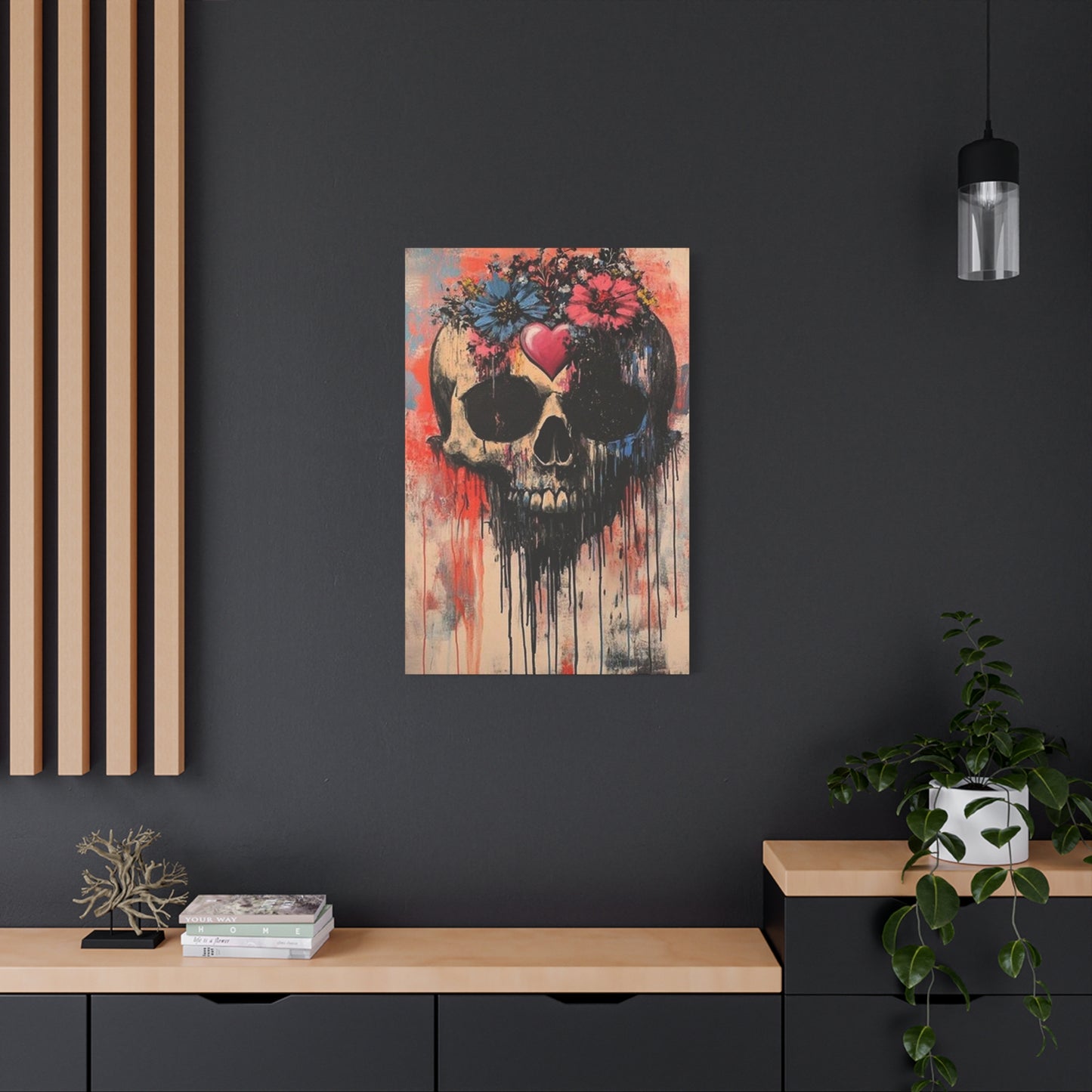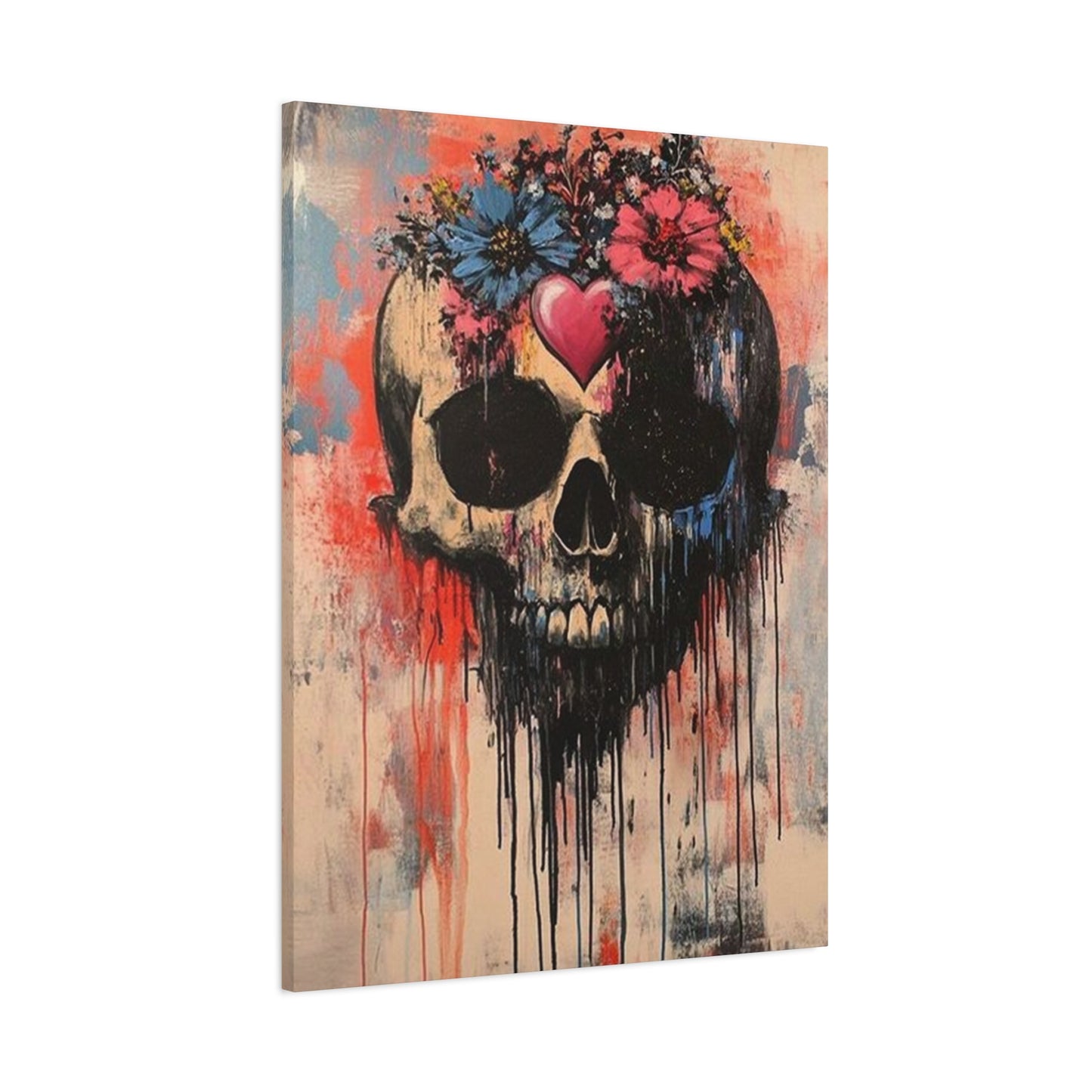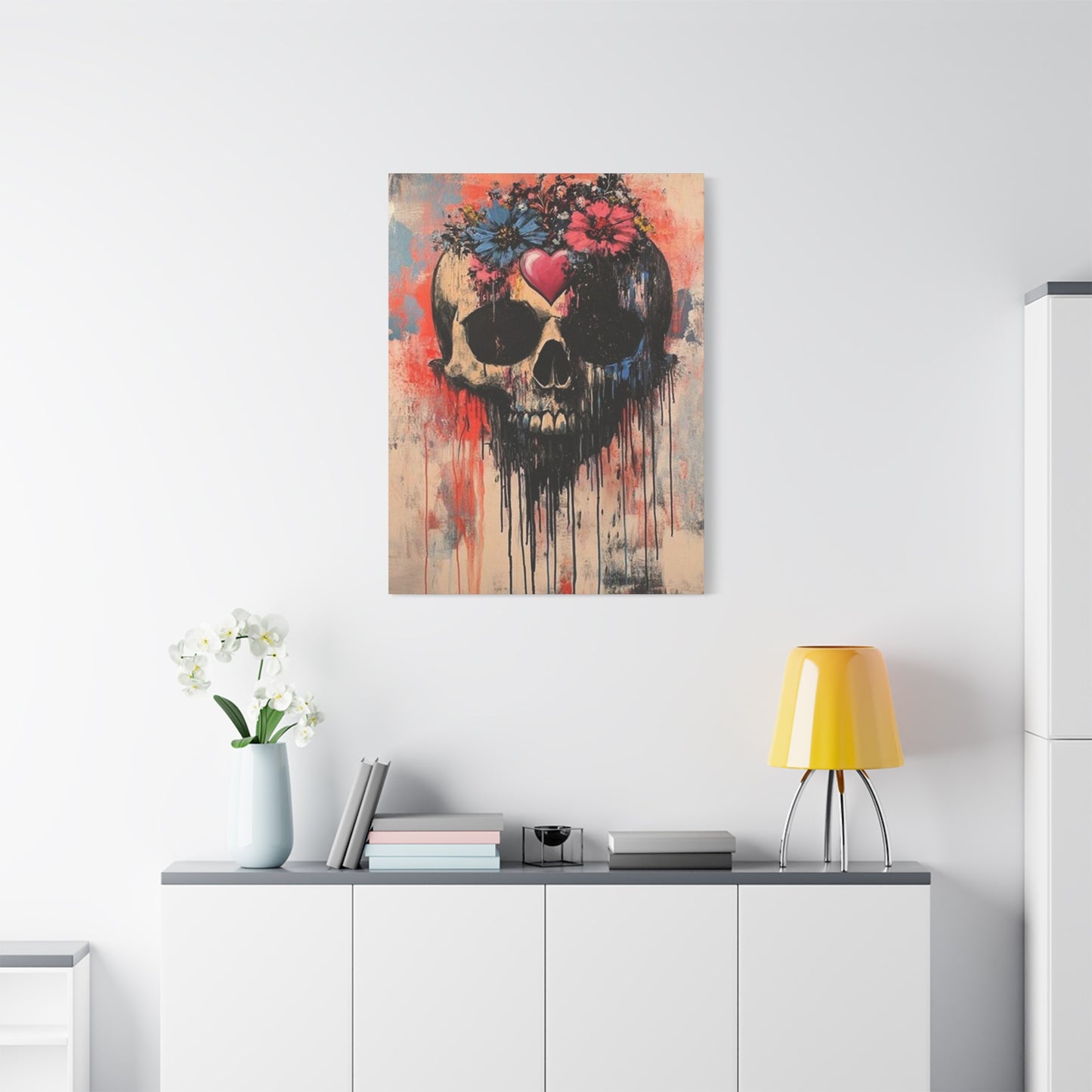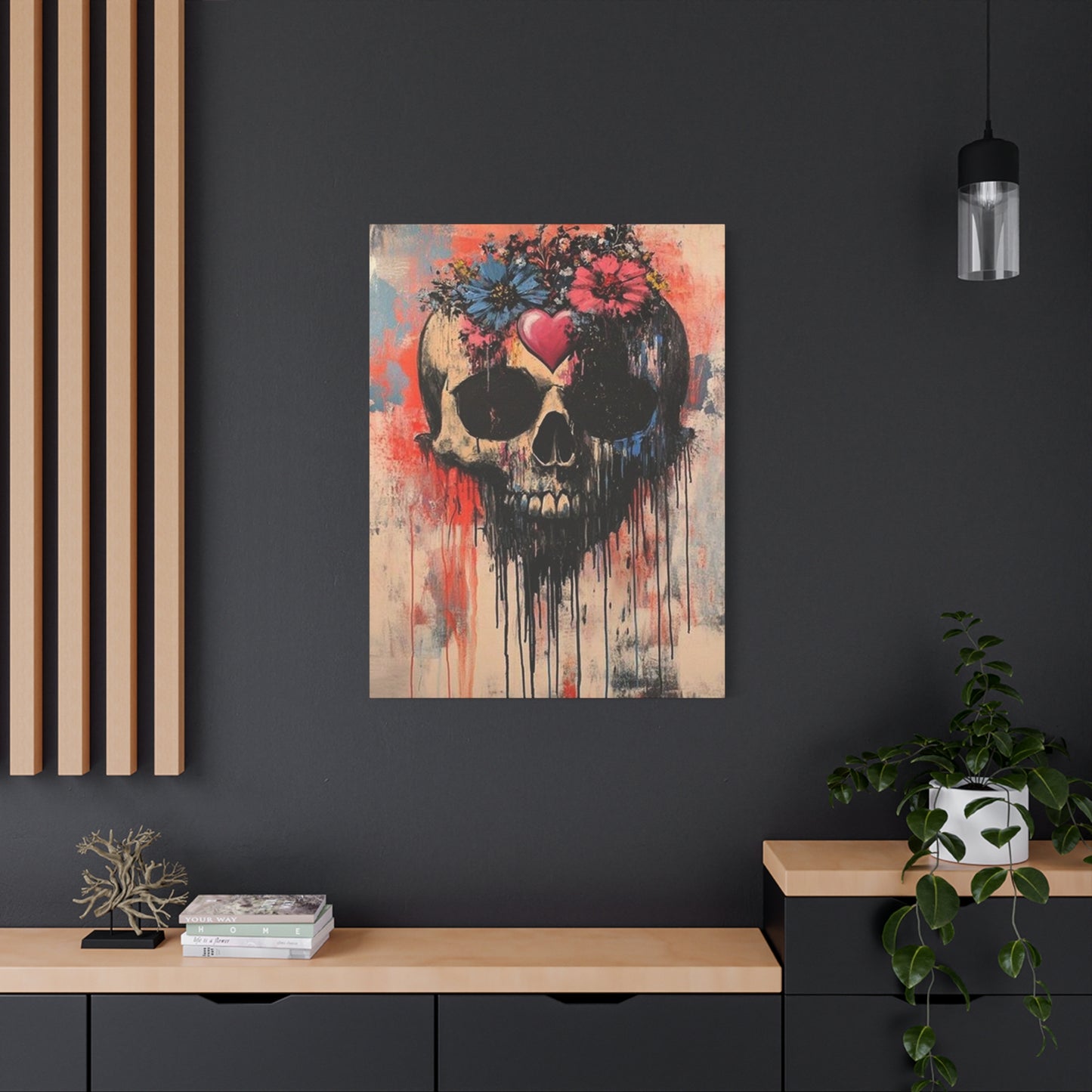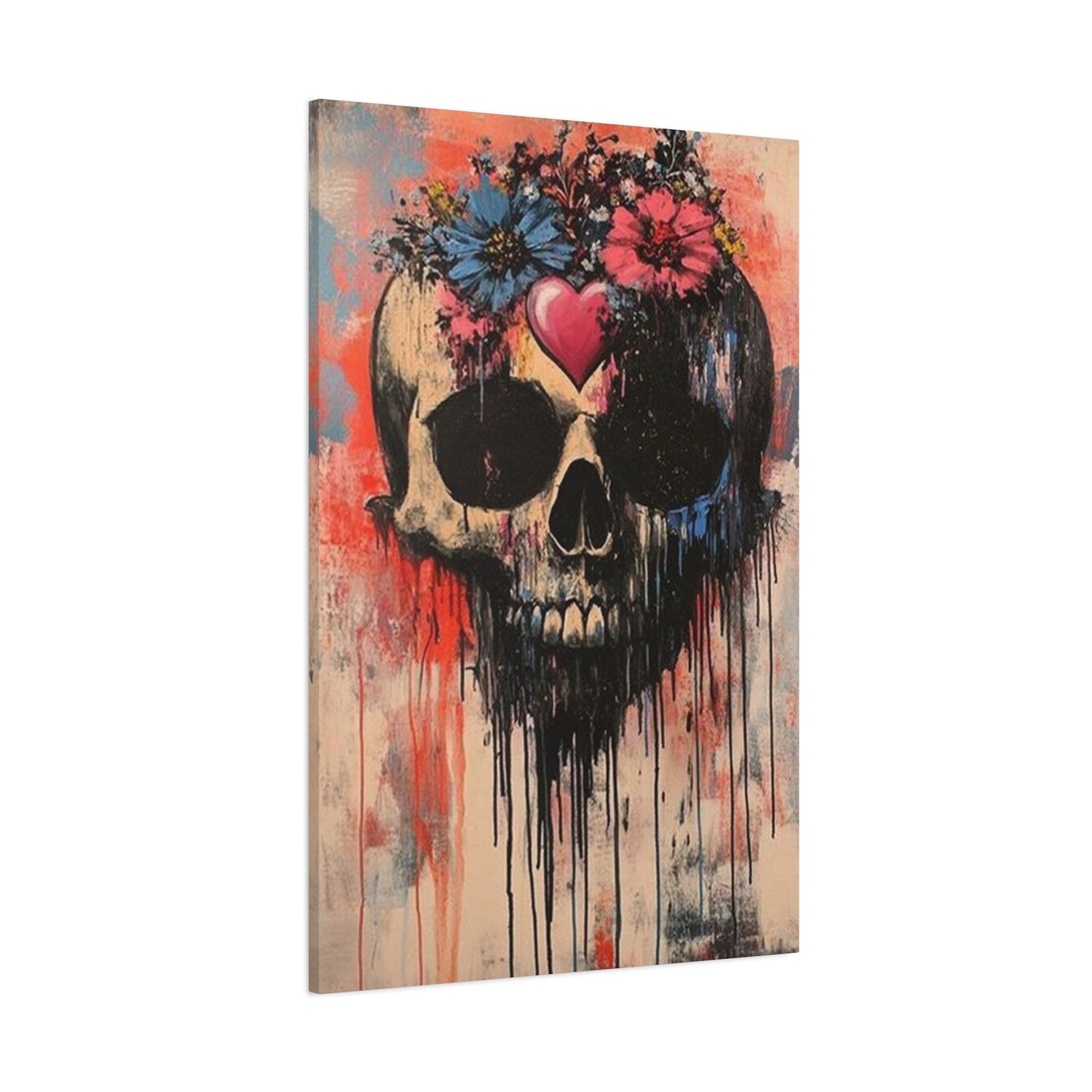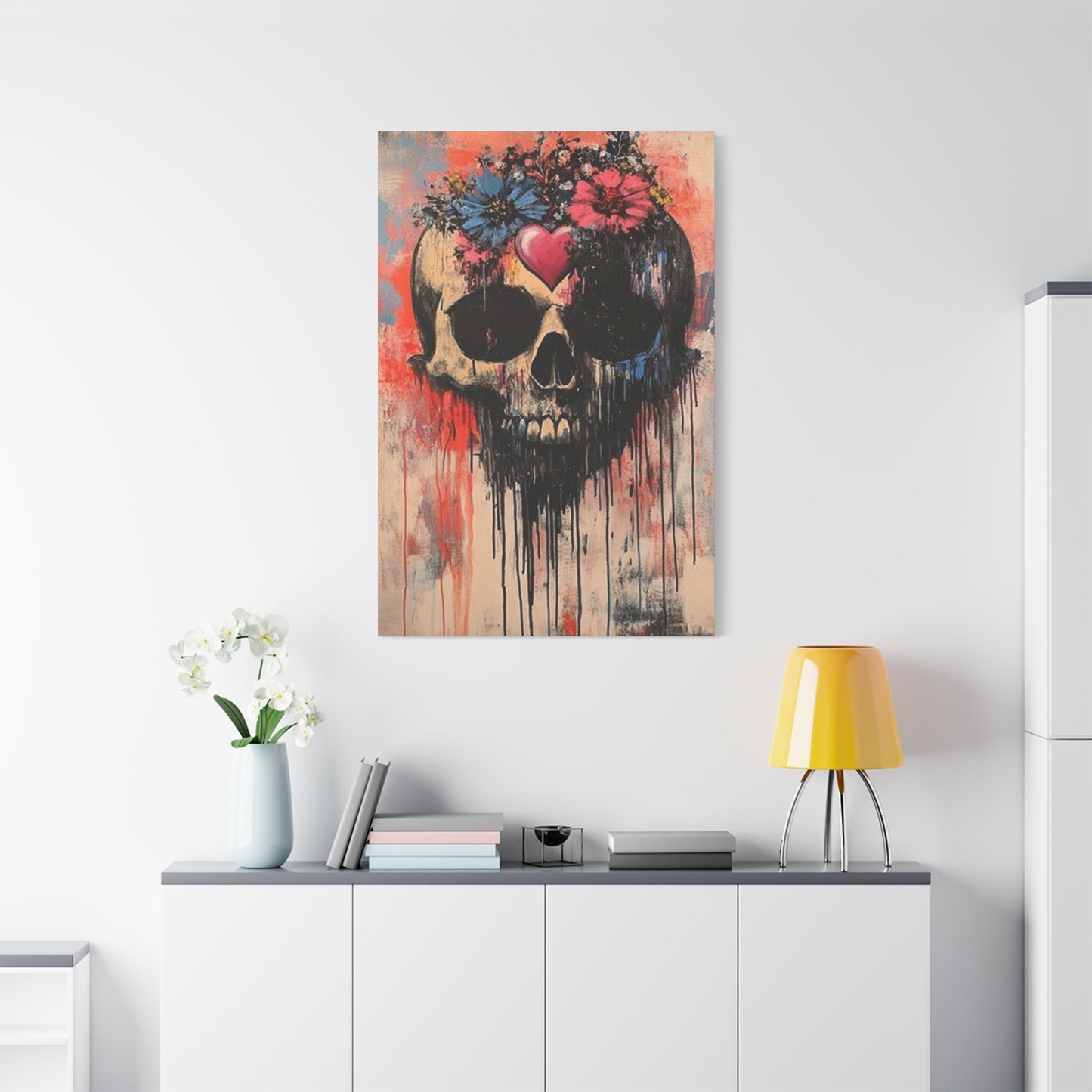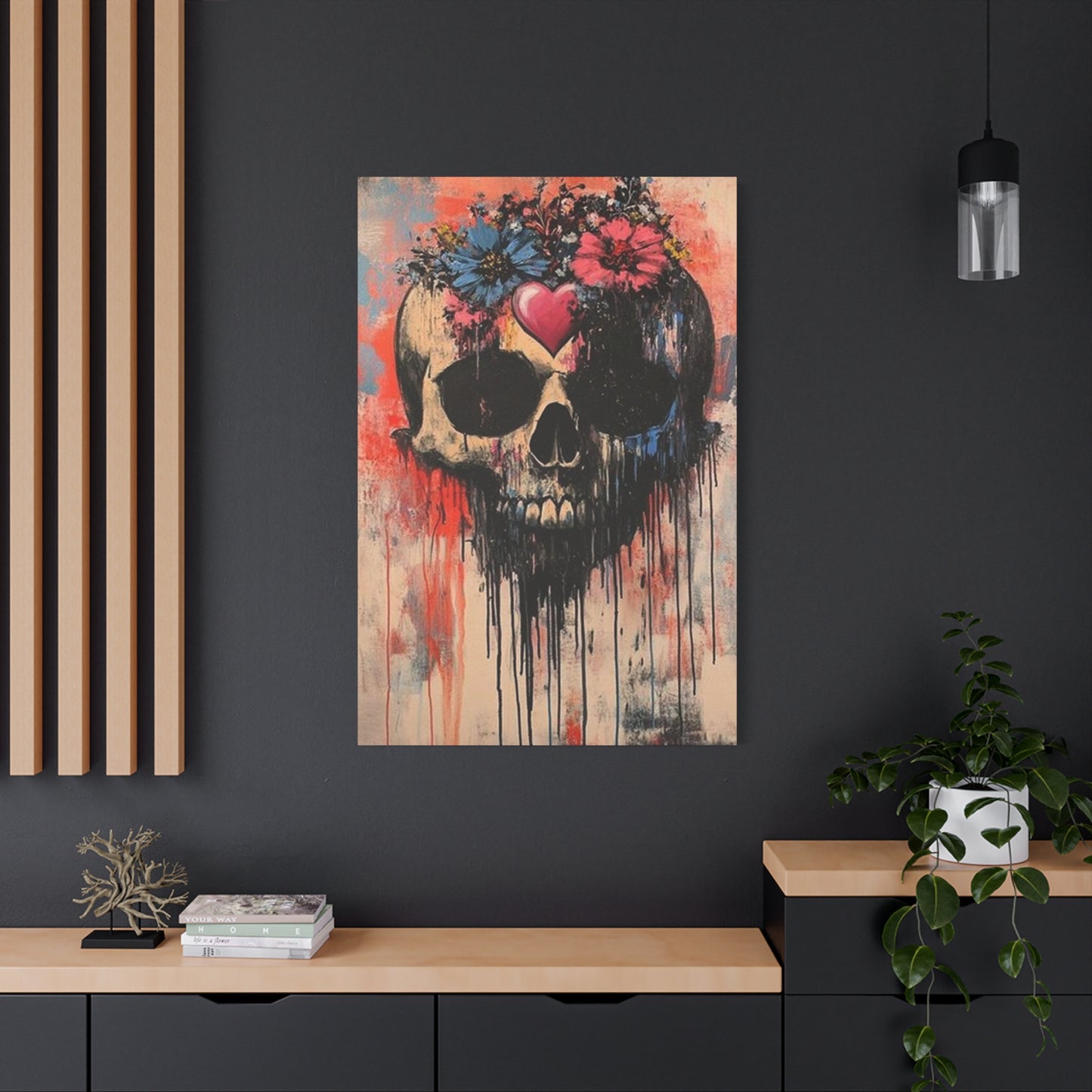Flowers Skull Wall Art: Complete Guide to Styles, Symbolism & Decor Tips
In the vast universe of art and interior design, certain motifs emerge that captivate us with their beauty, challenge our perceptions, and tell a profound story. The floral skull is one such emblem. At first glance, it is a study in contradiction: the skull, a universal symbol of mortality and finality, intricately entwined with or blooming forth with flowers, the ephemeral messengers of life, beauty, and vitality. This potent combination of the macabre and the beautiful, the gothic and the vibrant, has created a powerful artistic niche that is rapidly finding its way into our homes and our hearts.
This imagery is more than just a passing trend; it is a modern interpretation of age-old themes that have fascinated humanity for centuries. It speaks to the cyclical nature of existence, the idea of rebirth, and the beautiful, poignant dance between life and death. It is a visual philosophy, a reminder to live fully in the face of our mortality, an idea encapsulated in the Latin phrase memento mori but with a vibrant, life-affirming twist.
This guide will journey deep into the world of floral skull art. We will explore its cultural origins, from the celebratory calaveras of Día de los Muertos to the contemplative Vanitas paintings of Europe. We will analyze the artistic principles that make this juxtaposition so visually compelling and delve into the psychology of why we are so drawn to this dark yet hopeful imagery. Finally, we will provide practical, actionable advice on how to choose the perfect floral skull piece for your home, decorate with colorful skull posters to make a bold statement, and seamlessly integrate this edgy and meaningful art into any décor style. Whether you are a long-time admirer of this aesthetic or newly curious, prepare to discover the rich, multifaceted world of the floral skull.
Floral Skull Art: A Mix of Life and Death
The central, undeniable power of floral skull art lies in its direct and visually arresting representation of life and death. It is a motif built on a fundamental duality that every human being understands on a primal level. This blend is not merely for shock value; it is a thoughtful and often beautiful exploration of one of life’s most profound concepts: the inseparable relationship between existence and mortality.
On one hand, we have the skull. For millennia, it has been the most direct and potent symbol of death across cultures. It is a stark reminder of our physical impermanence, the structure that remains long after life has departed. In art, it has often served as a memento mori, a Latin term meaning "remember you must die." This concept was not intended to be morbid, but rather to encourage a more virtuous, meaningful, and appreciative existence. The skull is a symbol of truth, consequence, and the ultimate equalizer of humanity. It represents the end of a physical journey, a state of being that is static and unchanging.
On the other hand, we have the flowers. They are the antithesis of the skull in almost every way. Flowers are symbols of life, vitality, growth, and beauty. Their existence is fleeting and ephemeral; they bud, bloom in a riot of color and fragrance, and then inevitably wilt and decay. This transient nature is precisely what makes them so beautiful and precious. They represent the vibrant, sensory experiences of living: love, joy, passion, and the simple beauty of a moment. A flower is a symbol of the present, of a life being lived fully.
When these two powerful symbols are combined, they create a new, more complex meaning. The art is no longer just about death; it is about life in the context of death. The flowers may be seen as growing from the skull, suggesting that life can spring from death, a symbol of rebirth and resilience. Alternatively, they may be entwining the skull, suggesting that beauty and life are always present even when confronting our mortality. This juxtaposition forces us to reconsider our relationship with both concepts. It softens the harshness of the skull and gives a deeper, more lasting meaning to the fleeting beauty of the flowers. It creates a powerful visual dialogue, suggesting that without death, life would not be so precious, and without life, death would have no meaning.
Decorating Tips with Colorful Skull Posters
Incorporating colorful skull posters into your home décor is a fantastic way to inject personality, edginess, and a touch of artistic depth into your space. This bold motif can work in a surprising variety of styles, from modern minimalist to eclectic bohemian. The key is to style it with intention. Here are some practical tips for decorating with colorful skull posters.
First, use it as a focal point. A large, vibrant floral skull poster is a natural statement piece. Hang it in a prominent location where it will immediately draw the eye, such as above the sofa in your living room, over the headboard in your bedroom, or on the main wall in your dining area. By making it the centerpiece of the room, you allow the artwork to set the tone. Keep the immediate surrounding wall space relatively clear to let the piece breathe and have the maximum impact.
Second, pull colors from the art into the room. This is a classic interior design trick that creates a cohesive and professional look. Identify two or three of the most prominent colors in the poster’s floral elements—perhaps a vibrant magenta, a deep teal, or a sunny yellow. Then, subtly incorporate these colors into the room’s accessories. This could be through throw pillows, a cozy blanket, a vase, candles, or even books on a coffee table. This technique ties the artwork to the space, making it feel like an integral part of the design rather than a random addition.
Third, create a dynamic gallery wall. A floral skull poster can serve as the perfect anchor for an eclectic gallery wall. Its strong imagery and often-symmetrical shape provide a solid center to build around. Surround it with a mix of other pieces: abstract art, family photographs in simple frames, typographic prints, and perhaps a small mirror or other textural objects. The skull poster will add a dose of attitude and artistic flair to the collection, preventing it from feeling too generic.
Fourth, play with contrast. The beauty of a colorful skull poster is its inherent contrast, and you can extend this into your decorating. If your home has a very soft, neutral, or minimalist aesthetic, adding a floral skull poster can provide a much-needed jolt of energy and edge. The juxtaposition of a traditionally "edgy" symbol with clean, modern furniture or soft, feminine textiles creates a fascinating and sophisticated tension. It shows that your style is multifaceted and not afraid to break the rules.
Finally, consider the context. In a home office or creative studio, a floral skull poster can be a source of inspiration, a reminder of the cycles of creation and the need to seize the day. In an entryway, it makes for an unforgettable first impression, telling guests that this is a home with personality. By thinking about the function and feel of the room, you can place your poster where its unique message will resonate most strongly.
How to Choose the Perfect Floral Skull Wall Art
Selecting a piece of art is a deeply personal choice, but a few guiding principles can help you find the perfect floral skull wall art that not only speaks to you but also harmonizes beautifully with your living space. Taking the time to consider these factors will ensure you choose a piece you'll love for years to come.
The first step is to assess your existing color palette. Look at the dominant colors in the room where you plan to hang the art. This includes your wall color, furniture, rug, and curtains. You have two main approaches. The first is a complementary approach, where you choose a piece of art that features colors already present in your room. If you have blue accent pillows, a floral skull with blue delphiniums or hydrangeas will create a sense of cohesion. The second is a contrast approach. In a room with a mostly neutral palette of grays, whites, or beiges, a floral skull poster bursting with vibrant, contrasting colors can act as a stunning statement piece, injecting life and energy into the space.
Next, consider the scale of the artwork in relation to your wall. Size matters immensely when it comes to statement art. A small print can get lost on a large, empty wall, while an oversized piece can overwhelm a small room. A good rule of thumb is that art hung over a piece of furniture, like a sofa or a bed, should be about two-thirds to three-quarters of the width of the furniture. Before you buy, it is helpful to use painter's tape to mark the dimensions of the potential artwork on your wall. This will give you a clear visual of how the size will feel in your space.
Then, think about the artistic style. Floral skull art comes in a vast array of styles, each with a different mood. A hyperrealistic piece, with detailed bone texture and photographic flowers, can feel dramatic and intense. A watercolor design will have a softer, more ethereal, and dreamlike quality. An illustrative or graphic style might feel more modern and playful. A piece with minimalist line work will be subtle and sophisticated. Consider your home's overall aesthetic. Is it modern, bohemian, industrial, or traditional? Choose a style of art that aligns with or interestingly contrasts with your existing décor.
Finally, listen to your emotional response. Art should evoke a feeling. When you look at the piece, how does it make you feel? Some floral skull designs are dark and gothic, leaning into the macabre. Others are bright, celebratory, and full of life, like the sugar skulls of Día de los Muertos. Do you want a piece that is contemplative and thought-provoking, or one that is joyful and vibrant? The perfect piece of wall art is not just one that matches your couch; it is one that resonates with your personality and the atmosphere you want to create in your home.
The Rise of Skull and Flower Art in Pop Culture
The imagery of skulls and flowers, while rooted in deep cultural and historical traditions, has experienced a meteoric rise in contemporary pop culture over the last few decades. What was once a niche symbol in certain subcultures has now become a mainstream aesthetic, visible everywhere from high fashion runways to suburban living rooms. This popularization is a testament to the motif's powerful visual appeal and its ability to convey complex ideas in a single, striking image.
One of the most significant gateways for this imagery into the mainstream was through tattoo culture. For decades, skulls have been a staple in tattooing, often associated with biker gangs, rock and roll, and a general anti-establishment attitude. The addition of flowers, particularly roses, created the "romantic macabre" aesthetic that became wildly popular. It allowed individuals to embrace the toughness of the skull symbol while also expressing beauty, love, and loss. As tattooing became more widely accepted and artistic, these designs spread, influencing other art forms.
The world of fashion has also played a pivotal role. The late British designer Alexander McQueen famously used the skull as a signature motif, adorning scarves, jewelry, and clothing with it. His approach was never just about being morbid; it was about exploring themes of life, death, and savage beauty. By placing the skull in a high-fashion context, he elevated it from a subcultural symbol to a chic and edgy emblem of haute couture. This opened the doors for many other designers to incorporate floral skull imagery into their collections, solidifying its status as a fashionable icon.
Music and its associated visual culture have also been instrumental. Rock, metal, and punk bands have long used skulls in their branding to project an image of rebellion and non-conformity. As genres blended, artists began incorporating more complex visuals. A floral skull on an album cover or a concert t-shirt could suggest a wider range of themes—not just aggression, but also lyrical depth, melancholy, and a more poetic sensibility.
Finally, the rise of social media platforms like Pinterest and Instagram has acted as a massive catalyst. These visual-first platforms allow aesthetics to spread globally in an instant. A single, beautifully styled photo of a room with a floral skull poster can be seen, saved, and shared by millions, inspiring countless others to adopt the look. Artists specializing in this motif can now share their work directly with a global audience, bypassing traditional galleries. This digital word-of-mouth has turned the floral skull from a fringe interest into a bona fide and accessible design trend, celebrated for its unique blend of edge, beauty, and meaning.
Floral Skull Posters for a Bold Home Statement
In the world of interior design, making a "bold statement" means choosing a piece that is intentionally dramatic, confident, and sets the tone for the entire room. It is a choice that moves beyond simply decorating and into the realm of curating a personal atmosphere. A large-scale floral skull poster is one of the most effective tools for making just such a statement, instantly transforming a space from generic to unforgettable.
The boldness comes, first and foremost, from the scale. Opting for an oversized print immediately signals a confident design choice. A small, timid piece of art can be lovely, but a large poster that dominates a wall demands attention and becomes the undeniable anchor of the room. It acts in the same way an architectural feature or a major piece of furniture does, defining the space's focal point and influencing how everything else in the room is perceived. When you commit to a large floral skull poster, you are committing to a specific mood and personality for the room.
The subject matter itself is inherently bold. Choosing to hang a skull in your living room, even one adorned with beautiful flowers, is a departure from conventional, "safe" art choices like landscapes or abstracts. It is a choice that reflects a unique point of view and a comfort with deeper themes. It tells your guests that you are not afraid of art that is both beautiful and thought-provoking. This kind of choice is memorable. People may not remember a simple floral print, but they will remember the stunning, life-affirming skull that presided over your living space. It makes your home stand out.
A bold statement piece also serves as a brilliant problem-solver for large, empty walls. An expansive blank wall can be intimidating to decorate, and filling it with multiple small items can sometimes result in a cluttered look. A single, dramatic floral skull poster solves this problem with elegance and efficiency. It fills the space with a single, cohesive vision, providing color, pattern, and meaning all in one go. It is a minimalist approach to achieving a maximalist impact.
To make the boldest statement possible, consider the framing and placement. A simple, slim black or white frame allows the artwork itself to shine, while a more ornate or gilded frame can add another layer of drama and contrast. As mentioned, hanging the piece in a primary location—above a sofa, bed, or fireplace—solidifies its role as the room's centerpiece. You can further enhance its impact by installing a picture light above it, turning it into a gallery-worthy feature that draws the eye and highlights its details, especially in the evening. By embracing this art form in a large and unapologetic way, you are not just hanging a poster; you are making a powerful declaration of your personal style.
Cultural Roots of Floral Skull Imagery
The modern popularity of floral skull imagery is not a spontaneous trend; it is deeply rooted in rich cultural and art historical traditions that have explored the relationship between life and death for centuries. Understanding these roots adds a profound layer of appreciation for the art, revealing it to be part of a long and meaningful human conversation about mortality.
The most significant and vibrant cultural root is undoubtedly the Mexican tradition of Día de los Muertos, or the Day of the Dead. This holiday, a blend of indigenous Aztec rituals and Catholicism, is not a time for mourning but for celebration. It is believed that on these days, the spirits of the deceased return to the world of the living to be with their families. A central icon of this celebration is the calavera, or skull. Unlike the fearsome skulls of European tradition, these are often whimsical and friendly. The most famous are the sugar skulls, edible or decorative skulls made from sugar or clay, which are decorated with colorful icing, foil, and beads. They are adorned with flowers, particularly the cempasúchil (marigold), which is known as the "flower of the dead." Its bright color and strong scent are believed to guide the spirits back to their altars. The floral skull in this context is a symbol of celebration, remembrance, and the joyous, cyclical nature of life and death. It is about keeping the memory of loved ones alive.
A second major historical root comes from the European art tradition of Vanitas painting, which flourished in the Netherlands in the 16th and 17th centuries. These were symbolic still-life paintings intended to remind viewers of the transience of life, the futility of earthly pleasure, and the certainty of death. A skull was almost always the central element. It would be surrounded by other symbolic objects: wilting flowers or decaying fruit to represent the fleeting nature of beauty and life, an hourglass or a snuffed-out candle to symbolize the passage of time, and objects like books, jewelry, or coins to represent the vanity of wealth and knowledge in the face of death. While the tone of Vanitas paintings is more somber and moralizing than that of Día de los Muertos, the fundamental pairing is the same: the skull representing death, and the flowers representing the beautiful but transient nature of life.
By drawing from these two powerful traditions, contemporary floral skull art creates a unique blend. It often takes the celebratory color and life-affirming spirit of the calavera and merges it with the deep, contemplative quality of the Vanitas still life. This fusion allows the art to be both visually joyful and philosophically profound, honoring its diverse and meaningful cultural heritage.
Combining Dark Themes with Bright Colors in Wall Art
The technique of pairing dark or challenging themes with a bright, vibrant color palette is a powerful artistic strategy that extends far beyond the floral skull motif. It is a method used by artists across various genres to create work that is engaging, complex, and emotionally resonant. This approach leverages the psychological power of color to make difficult subjects more approachable and to create a compelling tension that captures and holds the viewer's attention.
At its core, this technique plays with our expectations. We are culturally conditioned to associate bright colors—yellows, pinks, light blues—with happiness, innocence, and positivity. We associate dark colors—blacks, greys, deep purples—with sadness, mystery, and solemnity. When an artist deliberately scrambles these associations, it creates a sense of cognitive dissonance. Seeing a dark subject, like a skull, rendered in cheerful, bright colors forces us to pause and re-evaluate our initial emotional response. The color draws us in, making us receptive to the image, while the subject matter makes us think more deeply.
This approach makes difficult conversations more accessible. An artwork that deals with themes of mortality, loss, or social critique could be alienating or overly depressing if rendered in a purely dark and gloomy palette. However, by using an inviting and beautiful color scheme, the artist can entice the viewer to engage with the piece. The beauty acts as a "way in" to the more challenging idea at the art's core. It is a spoonful of sugar that helps the medicine go down, allowing for a more thoughtful and less resistant contemplation of the underlying theme. The floral skull is a perfect example: the bright flowers make the skull less intimidating and more of a celebratory object of beauty.
Furthermore, this combination creates a more nuanced and realistic emotional landscape. Life is rarely just one thing; it is a mixture of joy and sorrow, light and shadow. Art that reflects this complexity often feels more authentic and relatable. A piece that combines a dark theme with bright colors acknowledges this duality. It suggests that there can be hope in despair, beauty in decay, and life in the midst of death. This emotional richness is what makes the art feel profound and gives it lasting power. It resonates with our own lived experiences, which are rarely black and white but are instead a vibrant and sometimes contradictory spectrum of feelings. By using the full palette of color to explore the full palette of human experience, artists create work that is both visually stunning and deeply human.
The Psychology Behind Floral Skull Art
Why are we so captivated by the image of a floral skull? The attraction is more than just aesthetic; it taps into deep-seated psychological principles and human fascinations. Our love for this motif can be understood through the lenses of terror management, our brain's attraction to paradox, and our innate desire to find hope and meaning in the face of life's greatest certainty: death.
One prominent psychological concept is Terror Management Theory (TMT). This theory posits that humans have a unique and often paralyzing awareness of their own mortality. To manage the potential terror this awareness can create, we adopt cultural worldviews and symbols that give our lives a sense of meaning, purpose, and symbolic permanence. Floral skull art can be seen as a beautiful and culturally sophisticated tool for terror management. By taking the ultimate symbol of death—the skull—and making it beautiful, decorated, and non-threatening, we symbolically tame death itself. The art allows us to confront our mortality in a safe, controlled, and aesthetically pleasing way. It acknowledges death but reframes it as a part of a beautiful, natural cycle, which can reduce existential anxiety and, paradoxically, increase our appreciation for life.
Our brains are also inherently drawn to puzzles and paradoxes. The juxtaposition of a skull and flowers is a visual riddle. It presents two conflicting ideas simultaneously, creating a form of cognitive dissonance that intrigues us. We see life and death, beauty and decay, softness and hardness all in one frame. This complexity engages our minds on a higher level than a simple, straightforward image. We are compelled to look longer, to try and resolve the contradiction or to simply appreciate the tension it creates. This mental engagement is a source of pleasure and makes the artwork feel more stimulating and memorable.
Furthermore, the imagery is a powerful symbol of hope and resilience. The visual of flowers blooming from the skull’s empty sockets is a potent metaphor for life continuing after death, or for new beginnings emerging from endings. This speaks to our deep-seated psychological need for hope. It suggests that even from great loss or decay, something beautiful and new can grow. This can be interpreted on a literal, spiritual level (rebirth, afterlife) or on a metaphorical, secular level (personal growth after trauma, creativity emerging from a period of stagnation). The image reassures us that life is a cycle and that endings are often just the prelude to new beginnings. This optimistic and life-affirming message is a powerful balm for the human psyche, making the floral skull a symbol not of despair, but of enduring hope.
Unique Floral Skull Poster Designs You’ll Love
The floral skull motif is not monolithic; it is a wonderfully versatile theme that artists interpret in a vast number of unique and creative styles. When you start exploring this genre, you will find a design that perfectly matches your personal aesthetic and the mood you want to create. Here are some of the most popular and unique floral skull poster designs to look out for.
Watercolor designs offer a soft and ethereal take on the subject. In this style, the sharp lines of the skull are often softened, and the colors of the flowers bleed and blend into one another in a dreamy, fluid way. The effect is less gothic and more romantic and artistic. A watercolor floral skull can feel light and airy, making it a great choice for spaces where you want a touch of edge without overwhelming the room with intensity. It is perfect for bohemian or shabby chic interiors.
For a more modern and edgy look, geometric or polygon designs are a fantastic option. Here, the skull and flowers are constructed from a series of interconnected triangles and other geometric shapes. This gives the image a digital, almost crystalline appearance. The style is clean, sharp, and highly contemporary. It focuses on form and structure, turning the organic subjects into a piece of modern graphic art. This style works exceptionally well in minimalist, industrial, or Scandinavian-inspired spaces.
Hyperrealistic designs are for those who appreciate incredible detail and dramatic impact. These artworks, whether paintings or digital creations, are rendered with such precision that they almost look like photographs. You can see every crack in the bone, every delicate vein on a petal, and the subtle play of light and shadow. The effect is incredibly immersive and intense, creating a powerful and museum-quality focal point.
Minimalist line art offers a subtle and sophisticated interpretation. In this style, the entire image is created with a single, flowing line or a few simple, clean lines. The design is stripped down to its essential form, relying on the negative space and the elegance of the line itself. A minimalist floral skull is an understated way to incorporate the motif, perfect for a chic and modern space where less is more.
Vintage botanical illustration styles combine the floral skull with the aesthetic of old scientific drawings. The flowers are often rendered with the detailed, labeled look of a botany textbook, and the skull may have an antique, aged appearance. This style feels intellectual, historical, and a bit mysterious. It's a perfect fit for a home with vintage furniture, a dark academia aesthetic, or a well-stocked library.
Finally, psychedelic or neon-colored designs push the vibrant aspect to its extreme. These posters use fluorescent, high-contrast colors and swirling, trippy patterns to create an image that is energetic, bold, and unapologetically modern. This style is perfect for making a loud and playful statement and works well in eclectic spaces that celebrate color and creativity.
How Floral Skulls Represent Life Cycles
The image of a floral skull is one of the most elegant and powerful visual representations of the natural life cycle. It moves beyond a simple binary of life versus death and instead presents them as interconnected, interdependent parts of a continuous and holistic process. The motif is a beautiful lesson in ecology and philosophy, reminding us that every ending is intrinsically linked to a new beginning.
At the most literal level, the image represents the process of decomposition and regrowth that sustains all life on Earth. When a living creature dies, its body, represented by the skull, eventually decomposes. This process returns vital nutrients to the soil. This nutrient-rich soil then becomes the fertile ground from which new life, represented by the flowers, can grow. The flowers, in turn, will bloom, wilt, and decay, continuing the cycle and enriching the soil for the next generation of growth. In this interpretation, the skull is not a symbol of a final end but a vital stage in a perpetual loop. It is a symbol of transformation—from one form of matter and energy to another. The art becomes a celebration of this fundamental ecological truth: that death is not a void, but a crucial ingredient for life.
This concept extends to a more philosophical or spiritual understanding of existence. The skull represents individual life, a single conscious existence that has come to its conclusion. The flowers represent the universal life force—the endless stream of energy that flows through all things. The image suggests that while the individual form may be temporary, the life force itself is eternal. It simply changes form, blooming again and again in new and beautiful ways. This perspective can be deeply comforting, reframing death not as an annihilation but as a rejoining with a larger, ongoing creative process.
The floral skull also serves as a poignant reminder of our own place within this cycle. In our modern world, we are often disconnected from the natural processes of life and death. We buy our food from stores and have sanitized rituals for dealing with mortality. This artwork brings that raw, natural cycle back into our consciousness. It encourages a sense of humility and connection to the natural world. It reminds us that we, too, are part of this process of growth, decay, and rebirth. This understanding can foster a deeper appreciation for the present moment and a more accepting, peaceful view of our own impermanence. The floral skull, in this light, is not macabre; it is a profound and beautiful acceptance of what it means to be a living part of a cyclical universe.
Adding Colorful Skulls to Bohemian Decor
Bohemian décor, often shortened to "boho," is an aesthetic that celebrates the unconventional, the artistic, and the free-spirited. It is a style defined by its eclecticism, rich textures, global influences, and a deep appreciation for nature and handmade items. Given its love for unique and meaningful objects, it is no surprise that colorful skull art, particularly the floral skull, finds a perfect home within the bohemian interior.
One of the core tenets of boho style is the rejection of rigid rules and the celebration of individuality. A colorful skull poster fits this ethos perfectly. It is not a traditional or "safe" choice, which immediately aligns with the non-conformist spirit of bohemianism. A boho space is a curated collection of objects that tell a story about the owner's travels, interests, and beliefs. A floral skull is a powerful narrative piece, speaking of life cycles, spirituality, and a love for art that is both beautiful and meaningful. It adds a layer of depth and personality that is central to the boho look.
Bohemian décor also heavily incorporates natural elements. Rooms are often filled with houseplants, natural wood furniture, woven textiles like macramé and rattan, and botanical prints. A floral skull poster is a natural extension of this theme. It directly features flowers and other natural elements, connecting it to the biophilic, or nature-loving, aspect of the style. The skull itself, as a natural object, can be seen as another element from the earth, adding an interesting, slightly mystical twist to the typical array of leaves and flowers.
Furthermore, the boho aesthetic is known for its rich and layered use of color and pattern. While some modern interpretations lean neutral, classic boho is a feast for the eyes, with vibrant jewel tones, earthy palettes, and a mix of global patterns from Moroccan rugs to Indian textiles. A colorful skull poster, especially one inspired by the vibrant hues of Día de los Muertos, can serve as a stunning focal point that complements this colorful and eclectic vibe. It can tie together various colors used throughout the room and add another layer of intricate pattern to the mix.
Finally, there is often a spiritual or mystical undercurrent to bohemian style, with an interest in things like crystals, tarot, and astrology. The floral skull, with its deep symbolism of rebirth, transformation, and the connection between the spiritual and physical worlds, resonates strongly with this aspect. It can be seen as a modern memento mori that encourages mindful living, or as a symbol of personal growth and transformation. In a boho space, it is more than just decoration; it is a talisman, a piece of art with a soul, which is the ultimate goal of any truly bohemian interior.
Floral Skulls as a Symbol of Rebirth and Transformation
Beyond the grand, universal cycle of life and death, the floral skull has been embraced as a deeply personal symbol of rebirth and transformation. For many, it is a powerful metaphor for their own life's journey, representing the overcoming of hardship, the shedding of an old self, and the emergence of a new, stronger, and more beautiful identity. In this context, the art becomes a personal emblem of resilience and growth.
The skull in this interpretation represents an ending, but not necessarily a physical death. It can symbolize the death of a past self, the end of a difficult period, a painful relationship, or a limiting mindset. It is the representation of a past that, while a part of one's history, no longer defines one's present. It acknowledges the struggles, the hardships, and the "death" of a former way of being. This acknowledgment is a crucial step in any transformative process; it is about honoring the journey and the lessons learned from the darker times.
The flowers, then, represent the new life, the growth, and the beauty that emerges from that ending. They are the visual manifestation of the transformation. They symbolize the new wisdom, strength, compassion, and self-love that have "bloomed" from the fertile ground of past experiences. The vibrancy of the flowers is a testament to the fact that it is possible not just to survive difficult times, but to thrive and flourish as a result of them. The image powerfully suggests that our most beautiful qualities can often grow directly from our most painful experiences.
This symbolism makes floral skull art particularly meaningful for individuals who have undergone significant life changes. It can be a totem for someone recovering from an illness, celebrating sobriety, leaving a toxic environment, or embarking on a new spiritual path. Hanging a floral skull poster in one's home can serve as a daily reminder of their journey and their strength. It is a visual affirmation that says, "I have been through an ending, and from it, I have bloomed."
This interpretation also connects to the idea of "post-traumatic growth," a psychological concept where people who endure psychological struggle following adversity report positive changes and a higher level of functioning than before. The floral skull is a perfect artistic representation of this phenomenon. It reframes a symbol of trauma and finality (the skull) into a vessel for beauty and new life (the flowers). It is an optimistic and empowering message, a celebration of the human spirit's incredible capacity to heal, adapt, and create beauty from ashes.
Where to Buy Stunning Floral Skull Wall Posters
Once you have decided to add this powerful and beautiful motif to your home, the exciting hunt for the perfect piece begins. Fortunately, thanks to the internet and a thriving community of independent artists, it is easier than ever to find stunning, high-quality floral skull wall posters that suit any style and budget. Here is a guide to some of the best places to look.
Online marketplaces for independent artists are often the best place to start your search. Etsy is a massive and diverse platform where you can find thousands of floral skull designs from artists all over the world. You can find original art, high-quality prints, and digital downloads that you can print yourself. The advantage of Etsy is the sheer variety of unique styles and the ability to support an independent creator directly.
Print-on-demand websites like Society6, Redbubble, and INPRNT are also fantastic resources. These platforms feature work from a huge global community of artists. You can browse a nearly endless selection of floral skull art and then have it printed on various materials and in a wide range of sizes, from small prints to massive posters. These sites frequently run sales and promotions, making it an affordable way to get high-quality art. The quality is generally excellent, and they handle all the printing and shipping for you.
For those looking for more curated or gallery-quality options, art-specific online retailers are a great choice. Websites like Saatchi Art, Art.com, and iCanvas offer a more curated selection of art, often including limited edition prints and work from established artists. While the price point might be higher, you are often investing in a piece with higher archival quality. These sites have powerful search filters that allow you to browse by color, style, and orientation, making it easy to find exactly what you are looking for.
Do not underestimate the power of social media for discovering artists. Instagram and Pinterest are visual hubs where many artists showcase their portfolios. Use hashtags like #floralskull, #skullart, #darkdecor, or #mementomori to find creators whose style you love. Many artists sell prints directly through their own websites (often linked in their bio) or take commissions for custom pieces. Buying directly from an artist is a wonderful way to ensure they receive the largest portion of the profit from their work.
Finally, for a more traditional and tactile experience, look for art in your local community. Local art fairs, craft markets, and comic conventions or alternative culture events are excellent places to discover unique art and meet the artists in person. You might find a screen-printed poster or a limited edition piece that no one else has. Supporting local artists helps to build a vibrant creative community right in your own backyard. With these diverse options, the perfect floral skull poster to complete your space is just a few clicks or a short walk away.
Conclusion:
The floral skull is more than just an edgy design element; it is a rich tapestry of symbolism, history, and artistic principle. It is a beautiful paradox that invites us to look deeper, to find harmony in contrast, and to celebrate the intricate, often messy, and ultimately beautiful cycle of existence. In its bony structure, we see the stark reality of our mortality, a reminder not to be feared, but to be understood as a catalyst for a more meaningful life. And from that very structure, in the vibrant bloom of the flowers, we see the irrepressible force of life itself—its resilience, its transient beauty, and its power to grow and thrive even in the most unlikely of places.
Decorating your home with this potent symbol is an act of personal expression. It is a choice to embrace complexity, to honor both the light and the shadows, and to create a space that is not only visually stunning but also rich with meaning. Whether you are drawn to the celebratory spirit of the calavera, the contemplative nature of Vanitas, or the modern, rebellious edge of pop culture, the floral skull offers a unique voice to add to your personal sanctuary. As you hang that poster on your wall, you are doing more than just filling a space; you are opening a conversation with one of life’s most profound and beautiful truths.

















